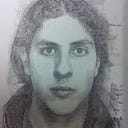Reflection Probes — Unity3D & URP
They define the current reflection of an entire scene and place it as light on the reflective materials. As the manual says:
“A Reflection Probe is rather like a camera that captures a spherical view of its surroundings in all directions. The captured image is then stored as a Cubemap that can be used by objects with reflective materials. Several reflection probes can be used in a given scene and objects can be set to use the cubemap produced by the nearest probe. The result is that the reflections on the object can change convincingly according to its environment.”
This is the normal scene without the reflection probe:
This is the reflection probe created in the middle of the room:
and now how it looks:
When working with a colorful and realistic environment, reflection probes can be really useful in giving that vividness to light through the environment that is lacking on unreflective scenes. By placing the direction in which light is estimated to travel, the same assets now have a very different look.
It is important to limit the reflection probe’s box size to the exact dimensions of the space where the reflection should be contained. Extending the box size into separate areas of the scene could make the environment seem odd as light from a closed room would not travel out into a sealed hallway.
Adjusting the intensity is the easiest way to determine if the reflection fit’s the scene and is a desired purpose of the project.
Adjustment:
The reflection intensity at 0.75 .
A very powerful tool in such an object so quick to set up. This is how reflection probes work on a basic level on the Universal Render Pipeline.
